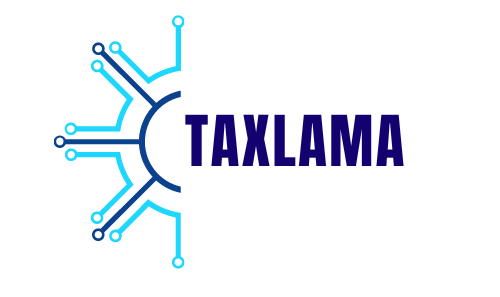Distributed practice is a learning technique that involves spreading out study or practice sessions over time rather than concentrating them in a single, extended period (known as massed practice). The method is widely supported by research in educational psychology as being more effective for long-term retention and skill acquisition. While the benefits of distributed practice are well-documented, one aspect that often raises questions is the optimal length of breaks between these practice sessions. Understanding the right duration for breaks in distributed practice sessions can make a significant difference in learning outcomes, performance, and overall efficiency. This article will explore various factors that determine the ideal length of breaks and offer guidelines based on current research.
What is Distributed Practice?
Before delving into the specifics of break lengths, it’s important to fully grasp what distributed practice entails. Unlike massed practice, where learning or training is crammed into a short, continuous session, distributed practice involves spreading the same amount of practice over a longer time, punctuated by breaks. For example, if you are preparing for an exam, distributed practice might involve studying for an hour a day over several days, rather than cramming for five hours the night before.
Key Benefits of Distributed Practice:
- Improved Retention: Studies consistently show that distributed practice leads to better long-term retention of material.
- Reduced Cognitive Overload: Spreading practice sessions over time gives your brain a chance to consolidate information.
- Increased Motivation: Shorter, spaced-out sessions prevent burnout and maintain motivation.
- Skill Mastery: This method is particularly effective for motor learning and skills-based tasks, where repetition over time solidifies technique.
While the benefits of distributed practice are clear, optimizing this method requires careful consideration of break lengths, which we will explore in detail.
The Science Behind Breaks in Distributed Practice
Breaks are an essential component of distributed practice. They provide time for rest and cognitive processing, allowing the brain to consolidate the information learned during practice. However, the length of these breaks can significantly impact the effectiveness of the learning process.
Why Are Breaks Important?
Research into cognitive load theory suggests that human brains have a limited capacity for processing information at any one time. Long, uninterrupted practice sessions lead to cognitive overload, which can hinder learning and retention. Breaks help to mitigate this effect by allowing the brain to relax, recharge, and process what has been learned.
In the context of distributed practice, breaks are not just a time to relax but also a period during which the brain organizes and stores the information it has recently encountered. This process is known as consolidation. Breaks also prevent fatigue, both mental and physical, which can reduce the quality of practice sessions.
How the Brain Processes Information During Breaks
Breaks in distributed practice serve a critical function in the process of memory consolidation. When we learn something new, the brain initially stores the information in short-term memory. To transfer this information into long-term memory, the brain needs time to process it, which often happens during periods of rest or breaks. This process involves strengthening the neural connections associated with the newly learned information.
Therefore, breaks in distributed practice are not wasted time. Instead, they are an integral part of the learning process. The right length of a break can provide the brain with enough time to consolidate information without losing focus or momentum.
Factors That Influence Break Length in Distributed Practice
There is no universal answer to how long breaks in distributed practice should be because several factors influence the ideal break duration. These factors include the nature of the task, the individual learner, and the overall structure of the learning session.
Task Complexity
One of the most significant factors that determine break length is the complexity of the task being practiced. For more complex tasks that require deep cognitive engagement, longer breaks may be necessary. This is because more complex tasks require greater cognitive resources, which means the brain needs more time to process and consolidate the information. In contrast, for simpler tasks that require less cognitive effort, shorter breaks may suffice.
For example, if a student is learning a new language, a complex task involving vocabulary, grammar, and pronunciation, longer breaks between practice sessions might be necessary to allow the brain to process all the new information. On the other hand, if the task is relatively simple, such as memorizing a short list of words, shorter breaks may be appropriate.
Task Type: Cognitive vs. Physical
The type of task—whether cognitive or physical—also plays a role in determining break lengths. Cognitive tasks (e.g., learning new concepts or solving mathematical problems) often require longer breaks for effective consolidation compared to physical tasks (e.g., practicing a musical instrument or honing a motor skill). Physical tasks might benefit from more frequent, shorter breaks to avoid muscle fatigue, while cognitive tasks often require deeper cognitive rest.
Age and Attention Span
The age of the learner is another important consideration. Younger learners generally have shorter attention spans and may benefit from more frequent, shorter breaks. For example, elementary school children may only be able to focus for 10-15 minutes at a time, requiring shorter, more frequent breaks during distributed practice sessions. In contrast, older students or adults may be able to sustain focus for longer periods and therefore may benefit from longer breaks after extended periods of practice.
Moreover, age influences the brain’s ability to consolidate new information. Younger learners often benefit from shorter sessions spread out over time with frequent breaks, while older learners may require longer breaks for deeper cognitive processing.
Personal Factors: Fatigue, Stress, and Mental State
Individual differences also play a role in determining optimal break lengths. Factors such as fatigue, stress, and overall mental state can influence how long a break should be. If a learner is feeling particularly tired or stressed, longer breaks may be necessary to allow for adequate rest and recovery before the next practice session. Conversely, if the learner is alert and focused, shorter breaks may be sufficient to maintain momentum.
Another important personal factor is mental endurance. Some individuals can maintain focus for longer periods, while others may need more frequent breaks to sustain their performance over time. Recognizing personal limitations and adjusting break lengths accordingly is essential for maximizing the benefits of distributed practice.
The Spacing Effect
One of the key principles behind distributed practice is the spacing effect, which states that information is better remembered when learning sessions are spaced out over time. The spacing effect also applies to breaks between practice sessions. Research shows that longer breaks between sessions can enhance retention, as they allow for more time for memory consolidation. However, if breaks are too long, the learner may lose focus or forget key information, which can diminish the benefits of distributed practice.
The optimal break length will depend on finding the right balance between allowing enough time for memory consolidation and maintaining focus and momentum. For most learners, breaks of 5 to 15 minutes between practice sessions are typically sufficient, although longer breaks may be necessary for more complex tasks or after longer practice sessions.
Research on Optimal Break Lengths
Numerous studies have investigated the optimal length of breaks in distributed practice sessions, with varying results depending on the type of task and the learner. However, some general guidelines have emerged from the research.
Short Breaks (5-10 Minutes)
For simple tasks or tasks that require frequent repetition, short breaks of 5 to 10 minutes are often sufficient. Research suggests that short breaks can help maintain focus and prevent cognitive overload without disrupting the flow of practice. Short breaks are particularly effective for tasks that require continuous concentration, such as studying for an exam or practicing a musical instrument.
Short breaks are also useful for maintaining motivation and engagement during distributed practice sessions. By providing frequent opportunities for rest, learners are less likely to experience burnout or fatigue, which can negatively impact performance.
Moderate Breaks (15-30 Minutes)
For more complex tasks or tasks that require deep cognitive engagement, moderate breaks of 15 to 30 minutes may be more effective. This allows the brain more time to consolidate new information and recover from the mental effort involved in the task. Moderate breaks are particularly useful for tasks that involve problem-solving, critical thinking, or creative work, where deeper cognitive processing is required.
Long Breaks (30 Minutes or More)
In some cases, longer breaks of 30 minutes or more may be necessary, particularly for tasks that are physically or mentally demanding. For example, athletes or musicians practicing for long periods may require longer breaks to prevent fatigue and maintain performance. Similarly, students studying for extended periods may benefit from longer breaks to allow for adequate rest and recovery.
However, it is important to note that longer breaks should be used sparingly, as they can disrupt the flow of practice and reduce focus and momentum. Long breaks are most effective when used strategically, such as after a particularly challenging or demanding practice session.
Conclusion
The length of breaks in distributed practice sessions is a critical factor in determining the effectiveness of the learning process. While there is no one-size-fits-all answer, several factors influence the optimal break length, including the complexity of the task, the age and attention span of the learner, and individual differences such as fatigue and mental state.
In general, shorter breaks of 5 to 10 minutes are effective for simple tasks, while moderate breaks of 15 to 30 minutes are more appropriate for complex tasks that require deep cognitive engagement. Longer breaks of 30 minutes or more may be necessary for particularly demanding tasks but should be used sparingly to avoid disrupting the flow of practice.
By finding the right balance between work and rest, learners can maximize the benefits of distributed practice and achieve better long-term retention, skill mastery, and overall performance.
click Here to visit the website




